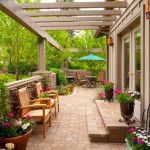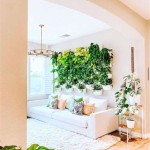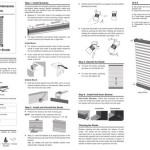Types of Decoration for Home Environments
Home decoration encompasses a broad spectrum of elements and techniques employed to enhance the aesthetic appeal and functionality of a living space. It goes beyond merely filling a room with furniture; it involves creating an environment that reflects the occupants' personalities, preferences, and lifestyles. Effective home decoration integrates various principles of design, including color theory, spatial arrangement, and material selection, to achieve a cohesive and visually pleasing result. The specific types of decoration chosen are often influenced by factors such as architectural style, budget constraints, and individual taste.
Interior Painting and Wallpaper
The application of paint and wallpaper represents a foundational element in home decoration. These surface treatments directly impact the perceived atmosphere and character of a room. Paint offers a cost-effective and versatile means of altering the visual impact of walls, ceilings, and trim. The selection of color plays a crucial role, with warm tones generally promoting a sense of comfort and intimacy, while cool tones tend to evoke feelings of serenity and spaciousness. The finish of the paint, such as matte, semi-gloss, or gloss, also influences the overall effect, with higher gloss levels reflecting more light and offering greater durability, but also highlighting imperfections.
Wallpaper, historically favored for its decorative qualities, provides a wider range of patterns, textures, and materials than paint alone. It can introduce intricate designs, simulate various architectural features, or even replicate natural elements like wood or stone. Contemporary wallpaper options include non-woven varieties that are easier to install and remove, as well as textured and embossed designs that add tactile dimension to walls. When selecting wallpaper, considerations should include the size and lighting of the room, the existing furniture and decor, and the desired overall aesthetic. Careful pattern matching and precise installation are essential to achieve a professional and visually harmonious result.
Beyond solid colors and traditional patterns, various painting techniques can add interest and depth to interior surfaces. Faux finishes, such as sponging, rag rolling, and strie, create textured effects that mimic the appearance of natural materials. Stenciling allows for the application of repeating patterns or motifs, while murals can transform an entire wall into a work of art. These more specialized techniques typically require greater skill and attention to detail but can result in uniquely personalized and visually striking spaces.
Furniture Selection and Arrangement
Furniture serves both a functional and decorative purpose within a home. The selection of furniture should consider the size and layout of the room, the intended use of the space, and the desired aesthetic style. A well-chosen furniture arrangement can maximize space utilization, create focal points, and enhance the flow of movement within a room. Furniture styles range from traditional and ornate to modern and minimalist, with numerous variations and subcategories within each broad classification.
The scale and proportions of furniture pieces are critical to achieving a balanced and harmonious arrangement. Overly large furniture can overwhelm a small room, while undersized pieces may appear insignificant in a larger space. The placement of furniture should consider the natural light sources, architectural features, and the desired traffic patterns. Common arrangement principles include creating conversational groupings, establishing focal points with statement pieces, and maintaining adequate pathways for movement.
Upholstery fabrics and finishes play a significant role in the decorative impact of furniture. The selection of fabrics should consider factors such as durability, stain resistance, and aesthetic appeal. A wide range of materials is available, including natural fibers like cotton and linen, synthetic fabrics like polyester and microfiber, and luxurious options like leather and velvet. The color and pattern of the upholstery should complement the overall color scheme of the room and contribute to the desired mood and atmosphere.
Beyond primary seating and storage pieces, accent furniture can add personality and visual interest to a space. Coffee tables, side tables, consoles, and accent chairs can serve as decorative elements while also providing functional surfaces. Mirrors can be used to enhance the sense of space and reflect light, while decorative screens can create visual partitions or conceal unsightly areas. The strategic placement of accent furniture can significantly enhance the overall decorative impact of a room.
Textiles and Soft Furnishings
Textiles and soft furnishings encompass a wide range of decorative elements that add texture, color, and comfort to a home. These include rugs, curtains, cushions, throws, and bedding. The careful selection and coordination of these elements can significantly enhance the overall aesthetic and create a more inviting and comfortable living space. Textiles play a crucial role in softening hard surfaces, absorbing sound, and adding visual warmth to a room.
Rugs serve as a foundational element in many rooms, defining spatial areas, adding texture and pattern, and providing a soft surface underfoot. The size, shape, and material of a rug should be carefully considered in relation to the size and layout of the room and the surrounding furniture. Rugs can be used to anchor a seating arrangement, define a dining area, or create a focal point in a hallway. Common rug materials include wool, cotton, silk, and synthetic fibers, each offering different levels of durability, stain resistance, and aesthetic appeal.
Curtains and drapes provide privacy, control light levels, and add a decorative element to windows. The choice of fabric, color, and style of curtains can significantly impact the overall look and feel of a room. Sheer curtains allow light to filter through while providing a degree of privacy, while heavier drapes offer greater light blockage and insulation. Curtains can be hung in various styles, including floor-length drapes, cafe curtains, and Roman shades, each offering a different aesthetic and functional benefit.
Cushions and throws add comfort and visual interest to sofas, chairs, and beds. These accessories provide an opportunity to introduce color, pattern, and texture to a space. Cushions can be used to add pops of color to neutral furniture or to complement the existing color scheme of a room. Throws offer a cozy layer of warmth and can be draped over furniture or folded at the end of a bed to add visual texture. The selection of cushion fillings and throw materials should consider factors such as comfort, durability, and ease of care.
Bedding plays a central role in the decorative impact of a bedroom. The choice of sheets, blankets, comforters, and duvet covers can significantly influence the overall aesthetic and create a more inviting and comfortable sleeping environment. Bedding materials range from natural fibers like cotton and linen to synthetic fabrics like microfiber and polyester. The color and pattern of the bedding should complement the overall color scheme of the room and contribute to the desired mood and atmosphere. Decorative pillows and throws can be added to further enhance the visual appeal of the bed.
Lighting Fixtures and Lamps
Lighting is a crucial aspect of home decoration, influencing not only the visibility within a space but also the overall mood and ambiance. Lighting fixtures and lamps serve both functional and decorative purposes, providing illumination while also contributing to the aesthetic appeal of a room. A well-designed lighting scheme incorporates multiple layers of light, including ambient lighting, task lighting, and accent lighting, to create a balanced and versatile environment.
Ambient lighting provides overall illumination to a room, creating a base level of light that allows for safe and comfortable movement. Common sources of ambient lighting include ceiling fixtures, chandeliers, and recessed lighting. The selection of ambient lighting fixtures should consider the size and layout of the room, the desired level of illumination, and the overall aesthetic style. Dimmable ambient lighting allows for adjustments to the light level to suit different activities and moods.
Task lighting provides focused illumination for specific activities, such as reading, cooking, or working. Common sources of task lighting include desk lamps, under-cabinet lighting, and adjustable floor lamps. The placement of task lighting should be carefully considered to minimize glare and shadows and to provide adequate illumination for the intended task. Task lighting fixtures should be chosen for their functionality and ergonomic design, as well as their aesthetic appeal.
Accent lighting highlights specific features or objects within a room, such as artwork, architectural details, or decorative accessories. Common sources of accent lighting include spotlights, track lighting, and picture lights. The placement of accent lighting should be strategic, directing light towards the desired focal points and creating visual interest. Accent lighting can also be used to create dramatic effects, such as highlighting textures or casting shadows.
In addition to their functional aspects, lighting fixtures can also serve as decorative elements in their own right. Chandeliers, pendant lights, and sconces can add visual interest and personality to a room. The selection of lighting fixtures should consider the overall aesthetic style of the room and the desired level of formality. The use of decorative light bulbs, such as vintage-style Edison bulbs, can further enhance the visual appeal of lighting fixtures.
Decorative Accessories and Artwork
Decorative accessories and artwork provide opportunities to personalize a home and express individual style. These elements can add character, visual interest, and a sense of history to a space. Decorative accessories encompass a wide range of items, including vases, candles, sculptures, and decorative bowls. Artwork includes paintings, prints, photographs, and sculptures.
The selection of decorative accessories should consider the overall aesthetic style of the room and the desired level of formality. Accessories can be used to add pops of color, introduce texture, or create visual contrast. The placement of accessories should be strategic, creating balanced arrangements and avoiding clutter. Grouping accessories in clusters of varying heights and sizes can create visual interest and draw the eye.
Artwork can serve as a focal point in a room, adding visual interest and expressing personal taste. The selection of artwork should consider the size and scale of the room, the existing color scheme, and the desired mood and atmosphere. Artwork can be hung in various arrangements, including symmetrical arrangements, asymmetrical arrangements, and gallery walls. The framing of artwork can also have a significant impact on its overall appearance.
Plants and flowers add life and vibrancy to a home, improving air quality and creating a more inviting atmosphere. Indoor plants can be chosen for their aesthetic appeal, their ability to purify the air, and their ease of care. Flowers can be used to add pops of color and fragrance to a room. The placement of plants and flowers should consider the amount of natural light available and the desired level of maintenance.
Personal mementos and collections can add a sense of history and personality to a home. These items can include photographs, souvenirs, antiques, and collectibles. The display of personal mementos should be thoughtful and organized, avoiding clutter and creating visual coherence. Grouping similar items together can create a more impactful display.

Decorating Styles 101 Find The Interior Design You Love

Cabin Interior Design Tips To Create A Modern Decorilla

Interior Design Styles Guide To Top Decor Types Lazy Loft

Top 26 Interior Design Styles With Examples And Academy

Top 26 Interior Design Styles With Examples And Academy

Interior Design Styles 101 The Ultimate Guide To Decorating In 2025 Decorilla

A Guide To The 30 Interior Design Styles You Need Know

27 Colorful Home Design Decorating Ideas Extra Space Storage

95 Inspiring Living Room Ideas To Create A Comfortable Space

Types Of Home Decor Items With Names Name
Related Posts







